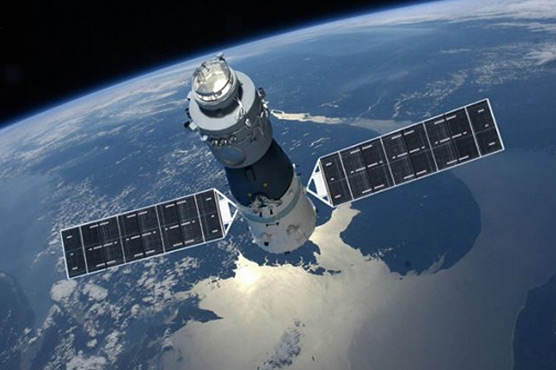China's space station Tiangong to begin flight mission in second half of 2019: CMS

According to flight mission planning, the space station project is divided into three stages: key technology verification, construction and operation.
BEIJING (Reuters) - China‘s space station Tiangong has completed key technology breakthroughs in its major system, and the flight mission will begin in the second half of this year, the China Manned Space Engineering Office (CMS) said on Tuesday.
According to the office, the Tianhe-1 core module has completed the comprehensive test at the prototype phase, the vacuum thermal test and other major tests, and will soon enter the flight model phase. The Wentian cabin and the Mengtian cabin have finished their production of prototype cabin structure, and the final assembling is under way.
The Long March 5B rocket has completed its development at the prototype phase.
"The development of the core module is moving forward smoothly," said Wang Liheng, senior consultant with the China Aerospace Science and Technology Corporation (CASC), and an academician of the Chinese Academy of Engineering.
According to flight mission planning, the space station project is divided into three stages: key technology verification, construction and operation. The first stage involves six flight missions, including the maiden flight of Long March 5B scheduled for the first half of the next year, and flights of the Tianhe-1 test core module, the Shenzhou spacecraft and the Tianzhou spacecraft.
The second stage will have six flight missions, including that of the Wentian cabin, the Mengtian cabin, the Shenzhou spacecraft and the Tianzhou spacecraft.
"The overall structure of the future space station is quite different from our previous Tiangong-1 and Tiangong-2, and it is more technically difficult, including the technology for mechanical arms, and the fact that space extravehicular maintenance will become a norm in the future, which will be a great challenge to astronauts.
Staying in space for a long time, for example, three months, five months, or six months, also poses great mental and physical challenges to astronauts," said Liu Yang, a Chinese astronaut.
The astronaut system has also carried out large-scale ground tests such as the comprehensive simulation verification of long-term manned flight and the underwater verification of extravehicular activities.
The preliminary selection of the third batch of astronauts has been completed, and the extravehicular spacesuit is in the process of flight production.
Around 2022, China is space station Tiangong will officially complete its in-orbit construction, and become a national space laboratory, which will have long-term manned care and support large-scale, multidisciplinary space science experiments.
"The future space station actually has a lot of unique features. First of all, many systems are completely new. At the initial stage, it is only a small space lab consisting of only one room and one hall. In the future, there will be several station modules to dock with the space station. As the internal space grows bigger, the interaction between systems will become more complex."
"I am excited and looking forward to be the first batch of astronauts to enter the space station of our country," said Chen Dong, another Chinese astronaut.
China has made remarkable achievements in its manned space program. Up to now, China has successfully launched 12 spaceships, the Tiangong-1 target obiter and the Tiangong-2 space laboratory. In all, 11 astronauts have made 14 trips into space and returned to the Earth safely.


